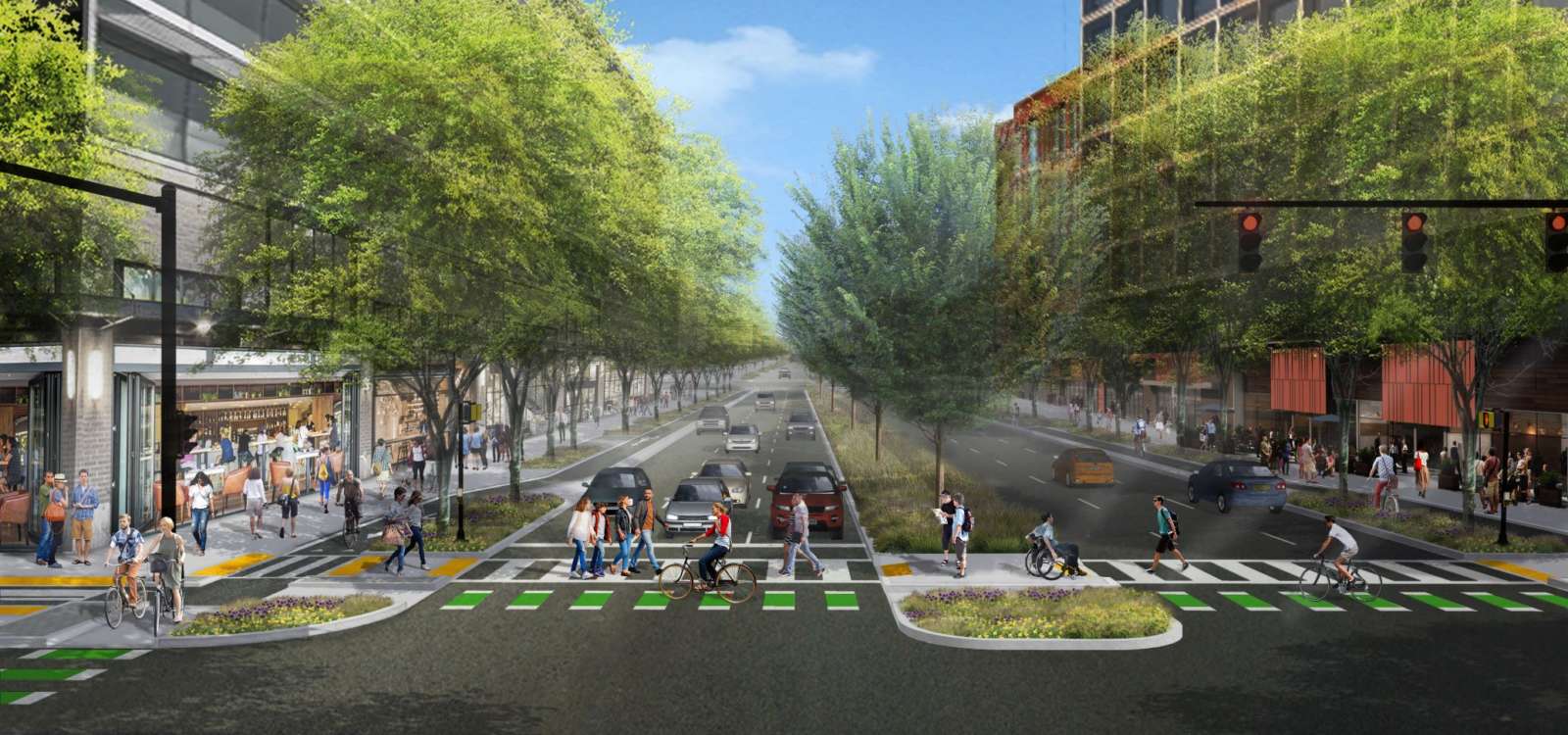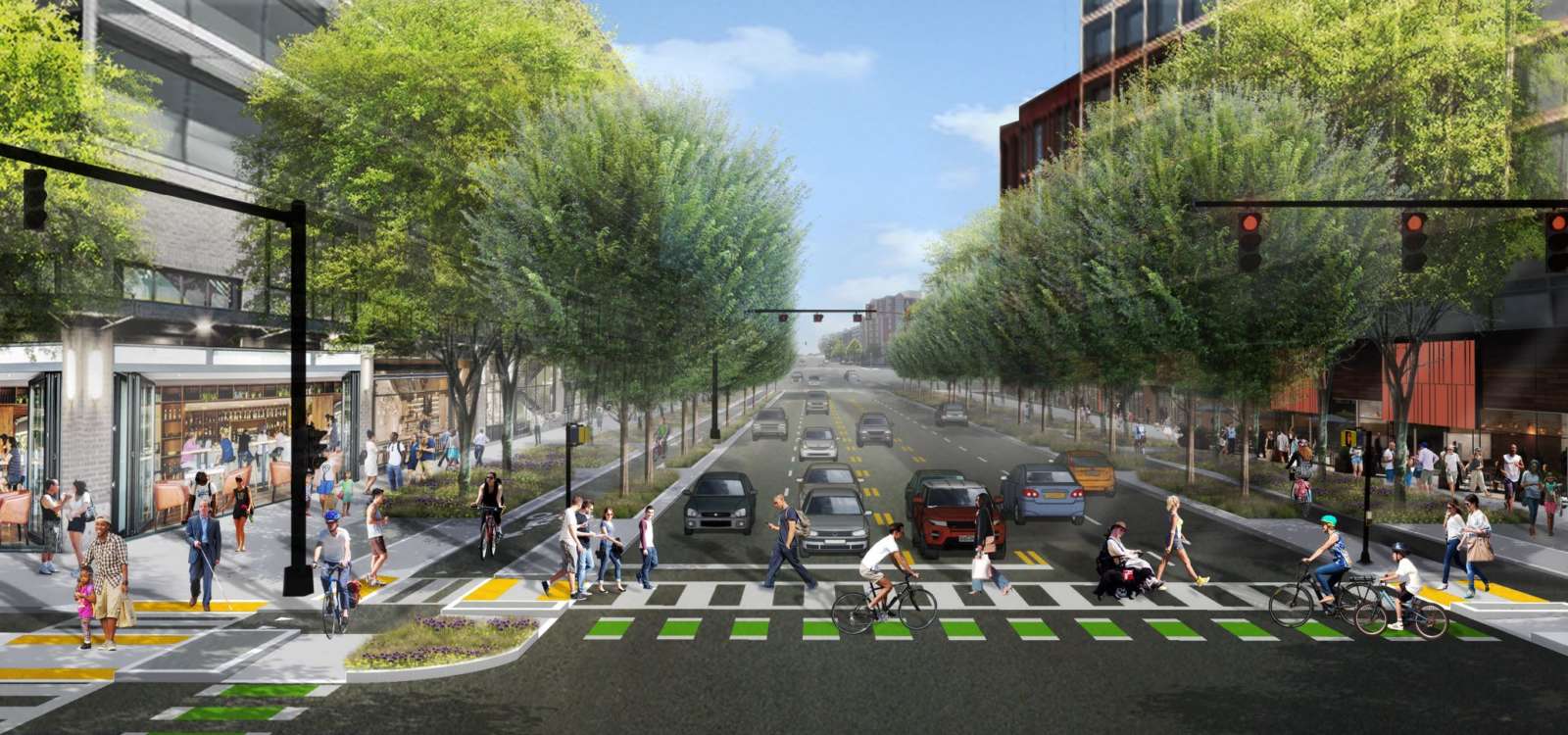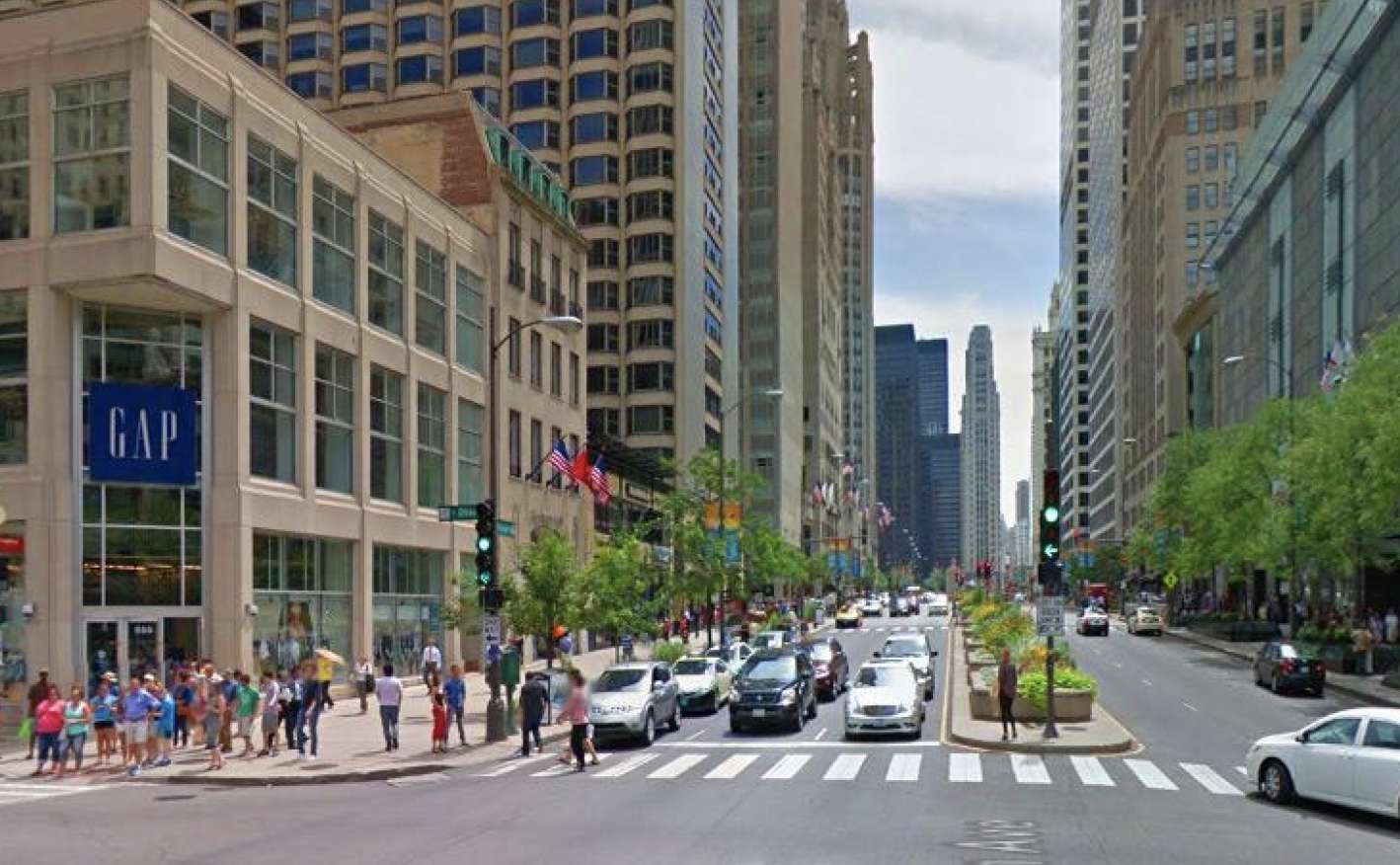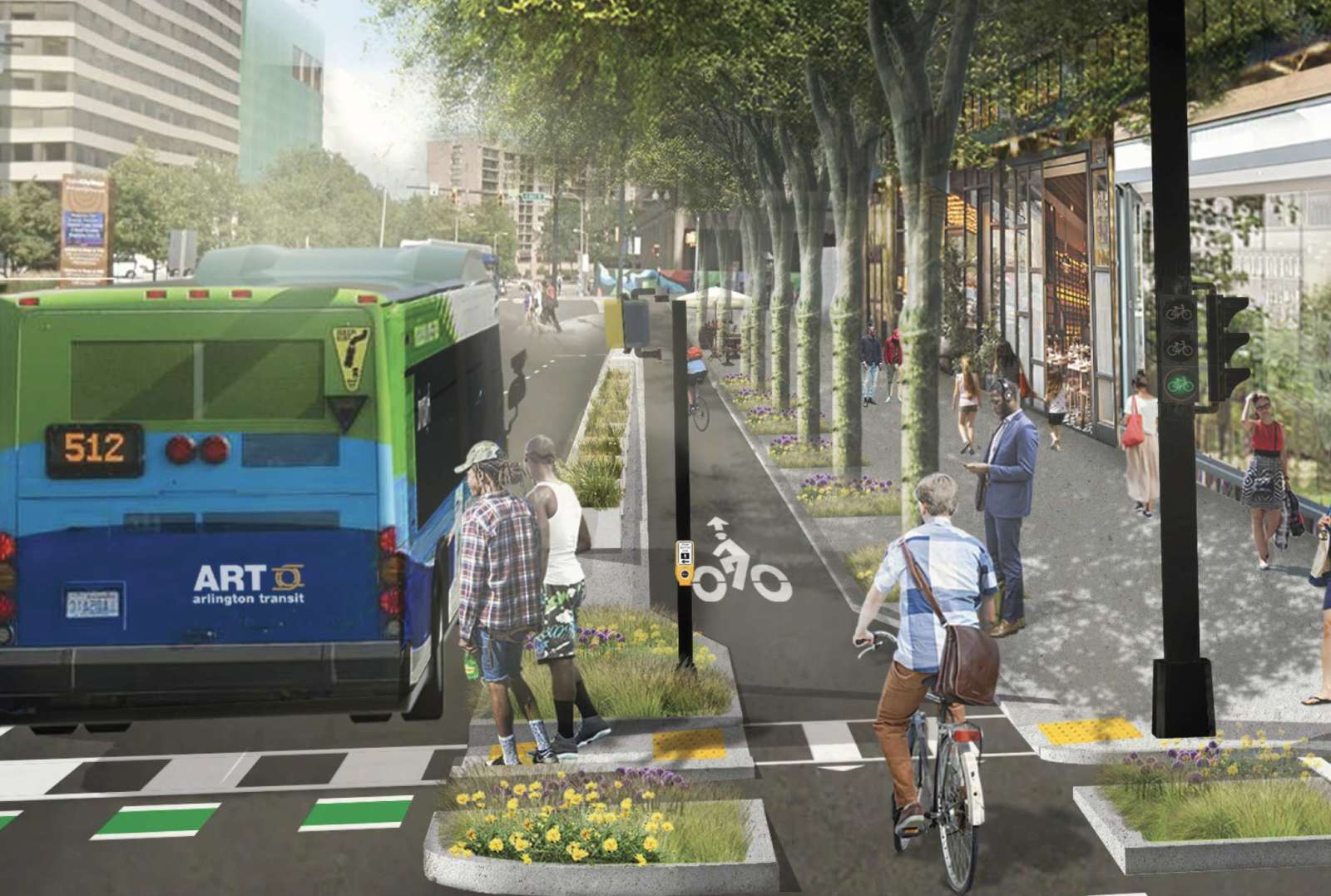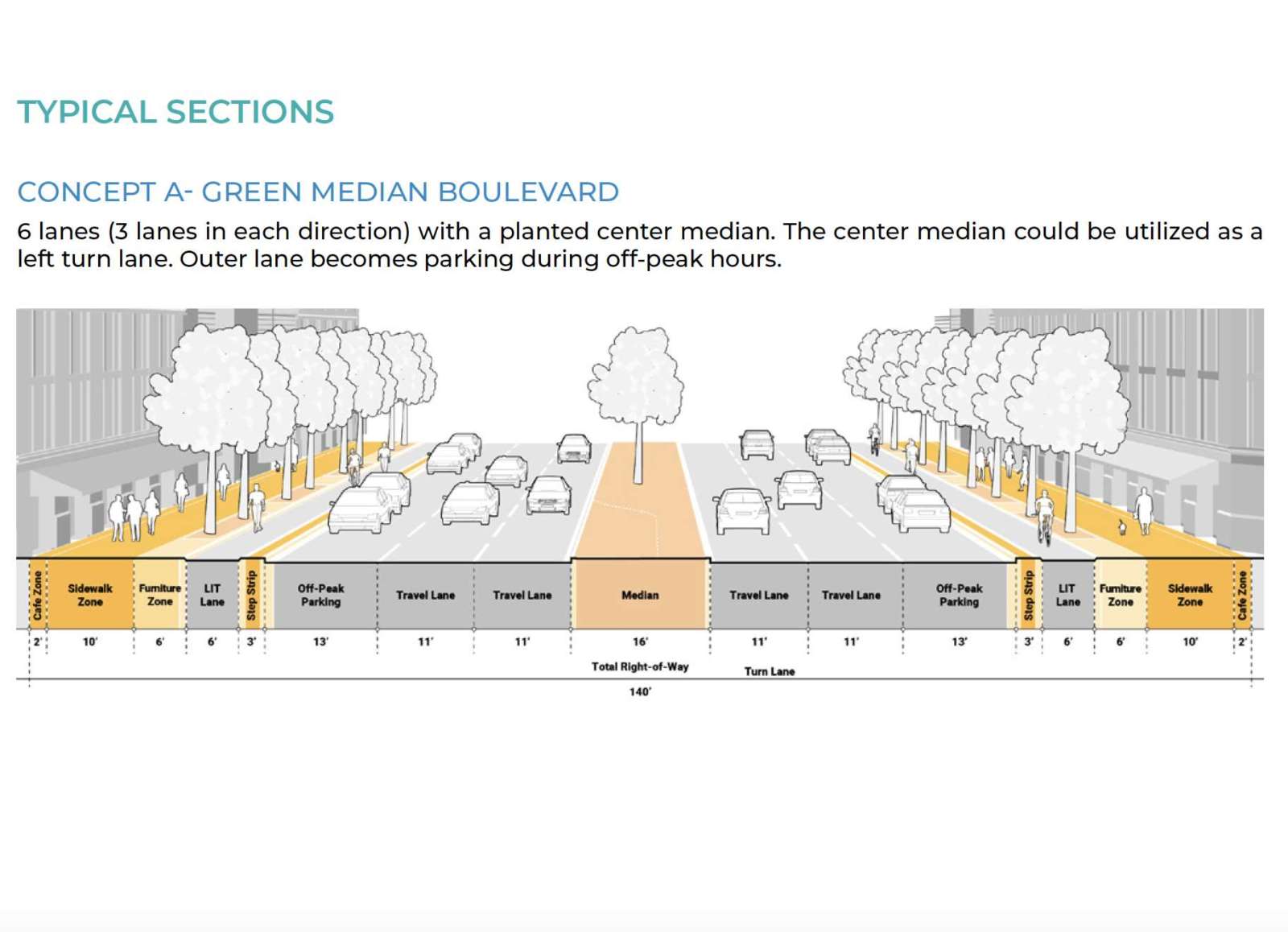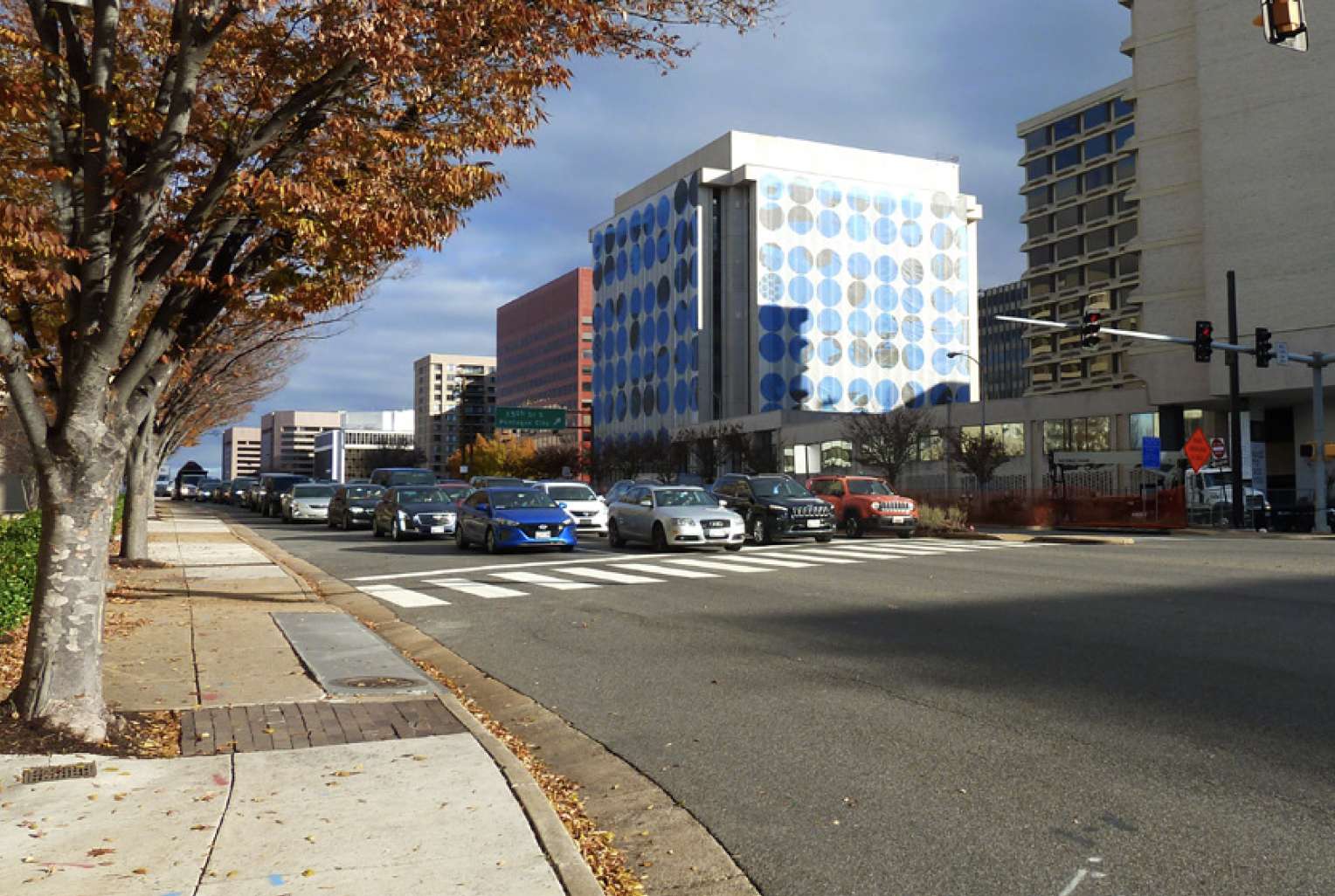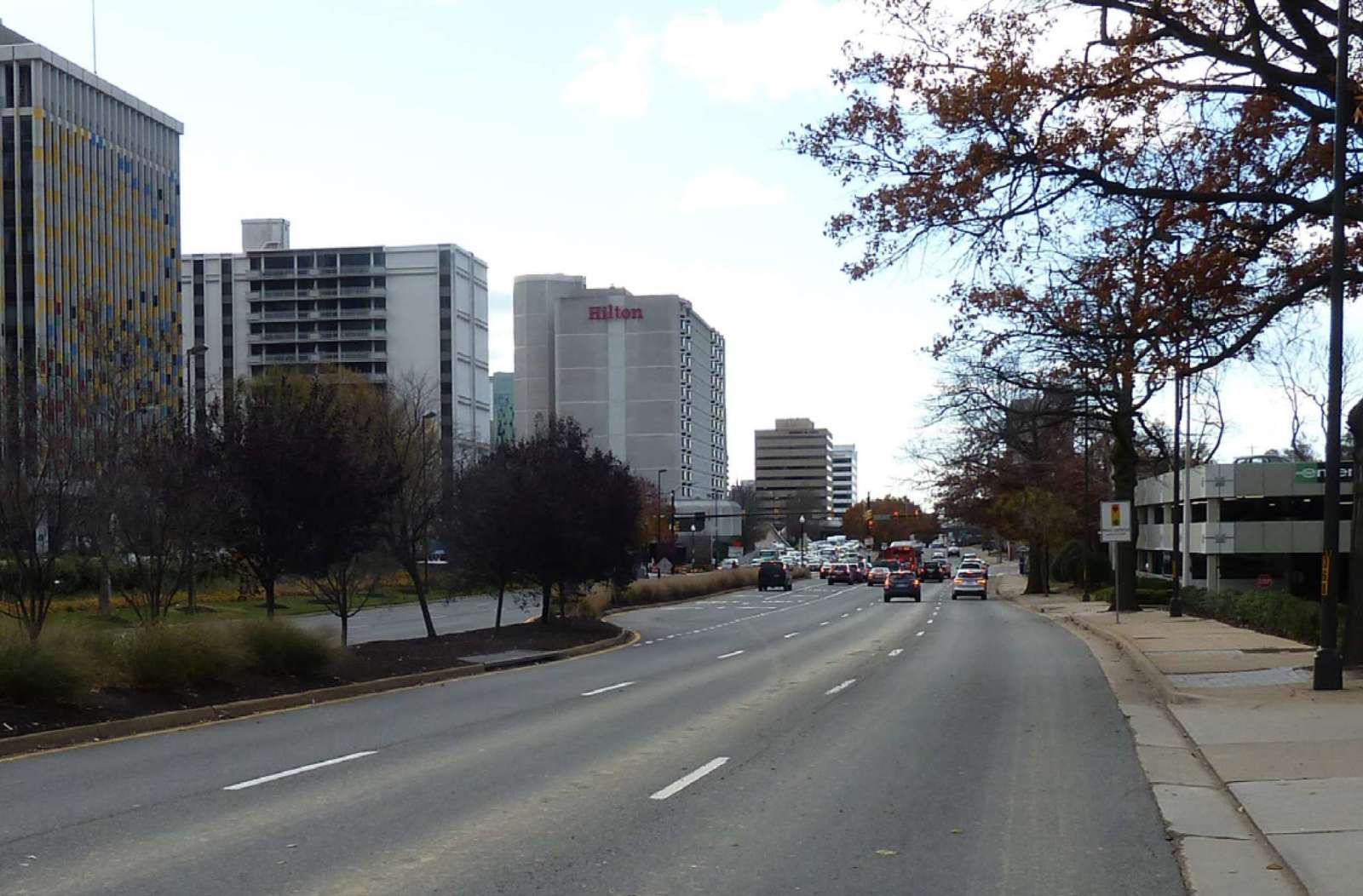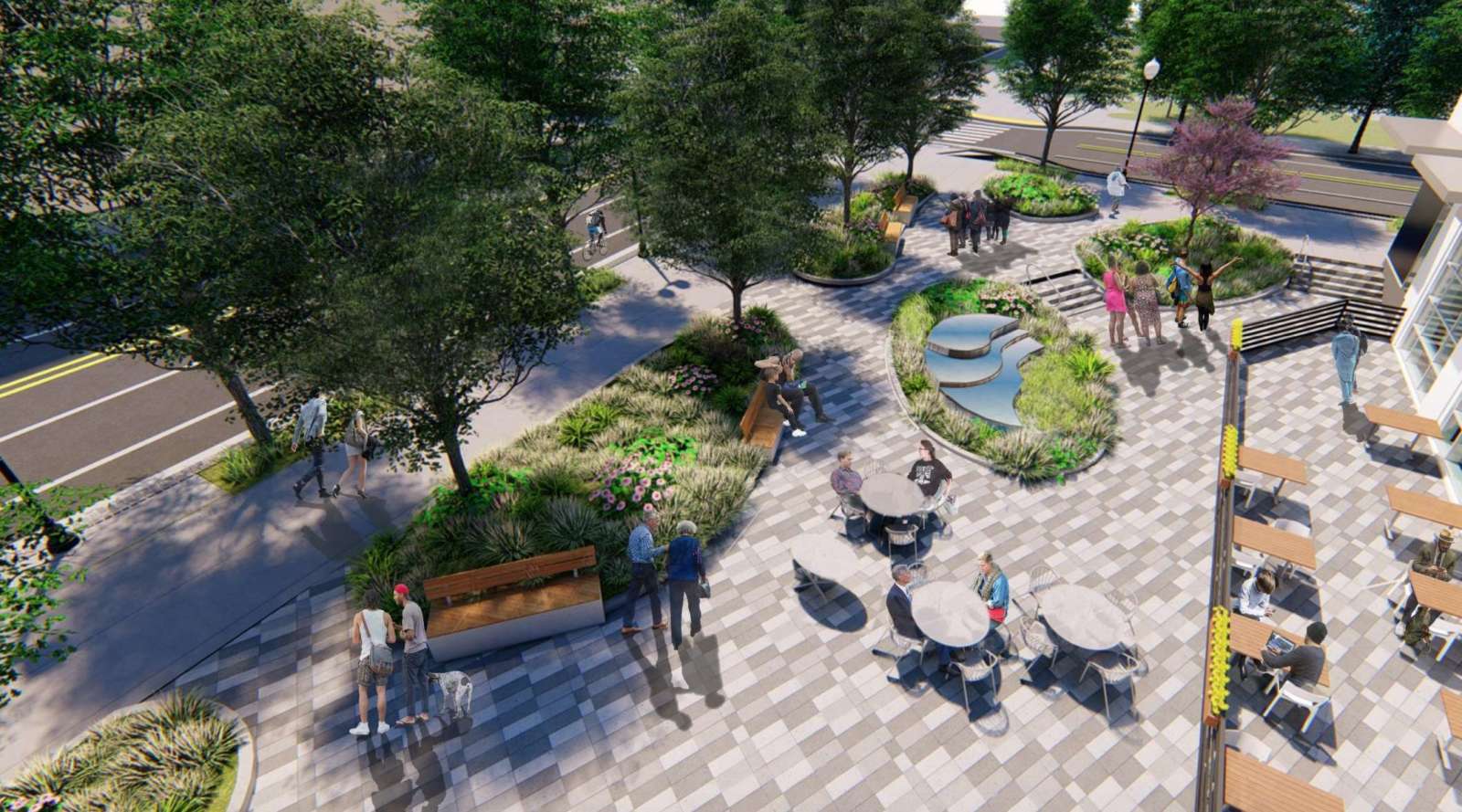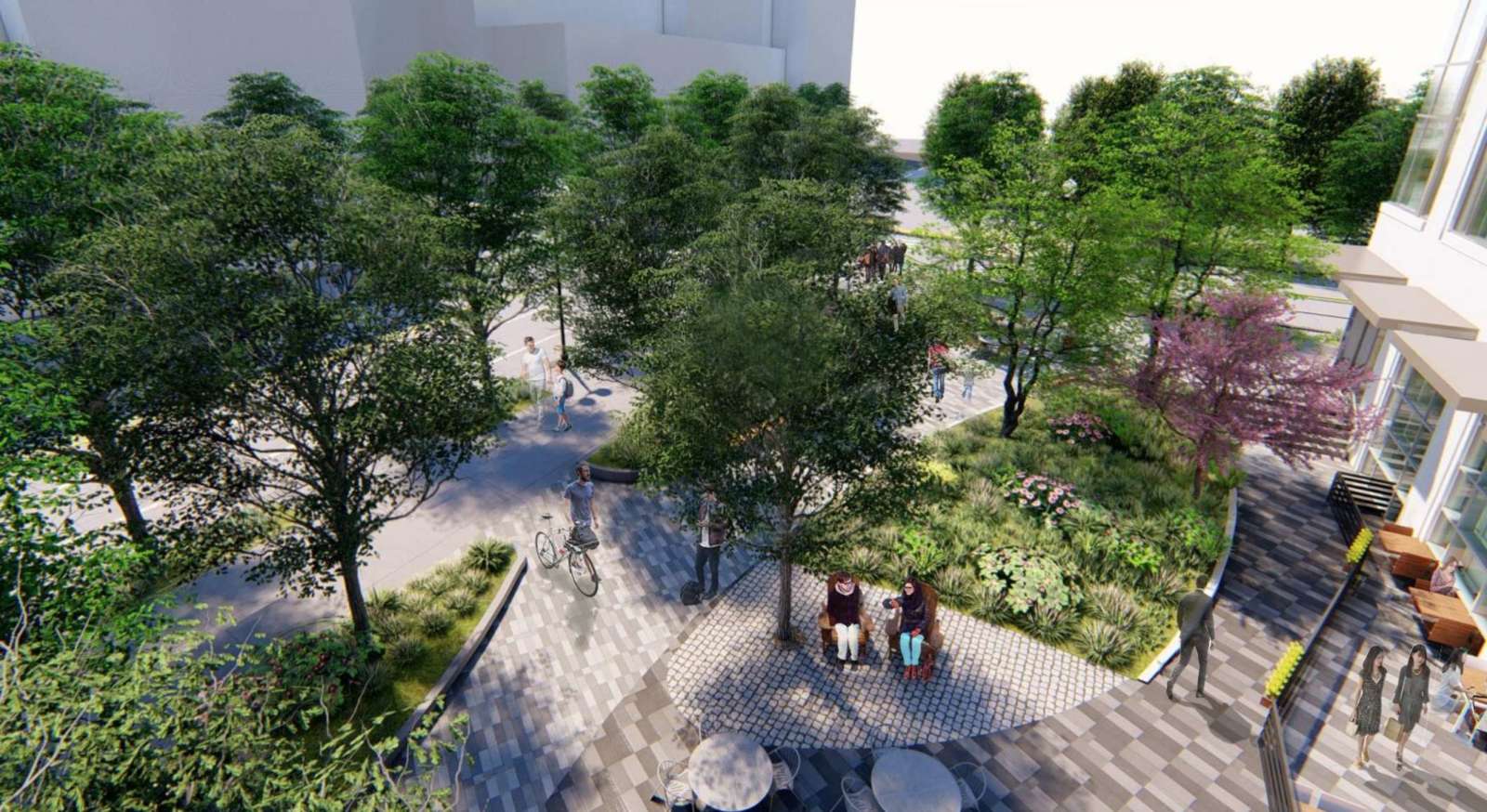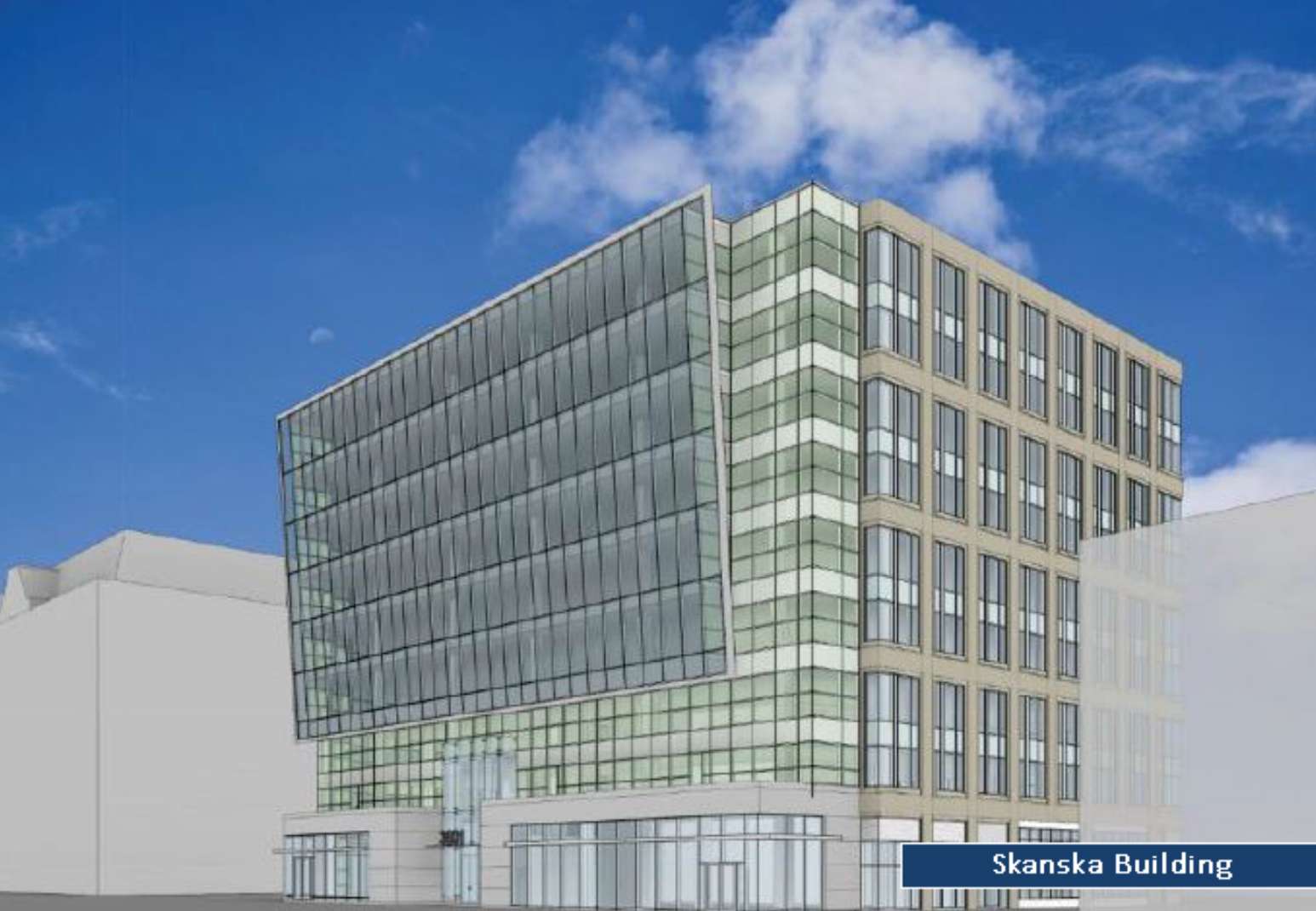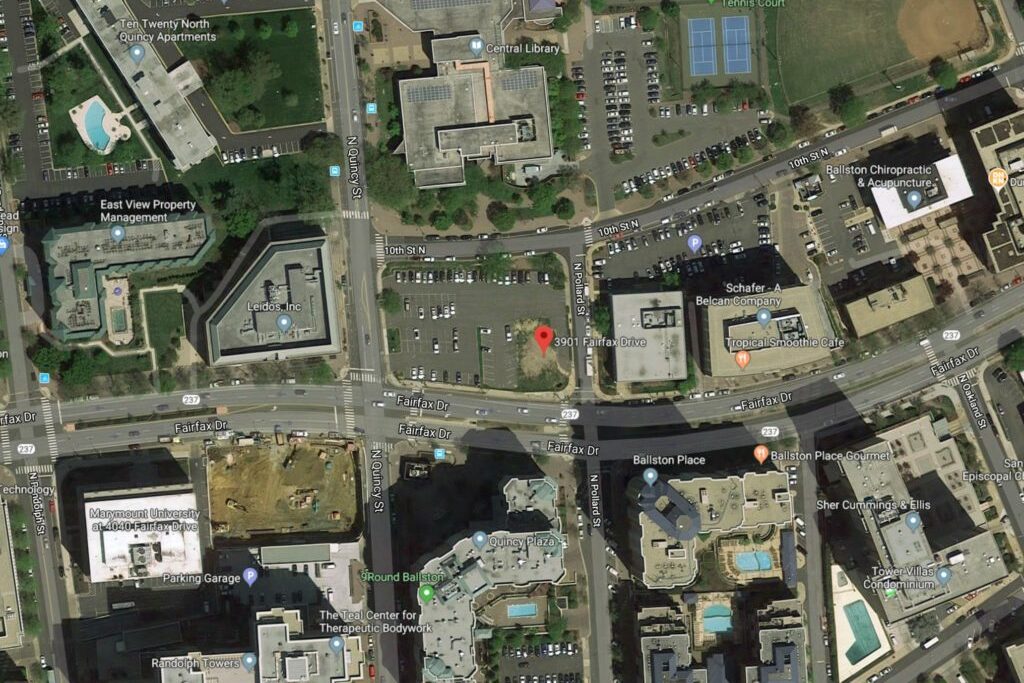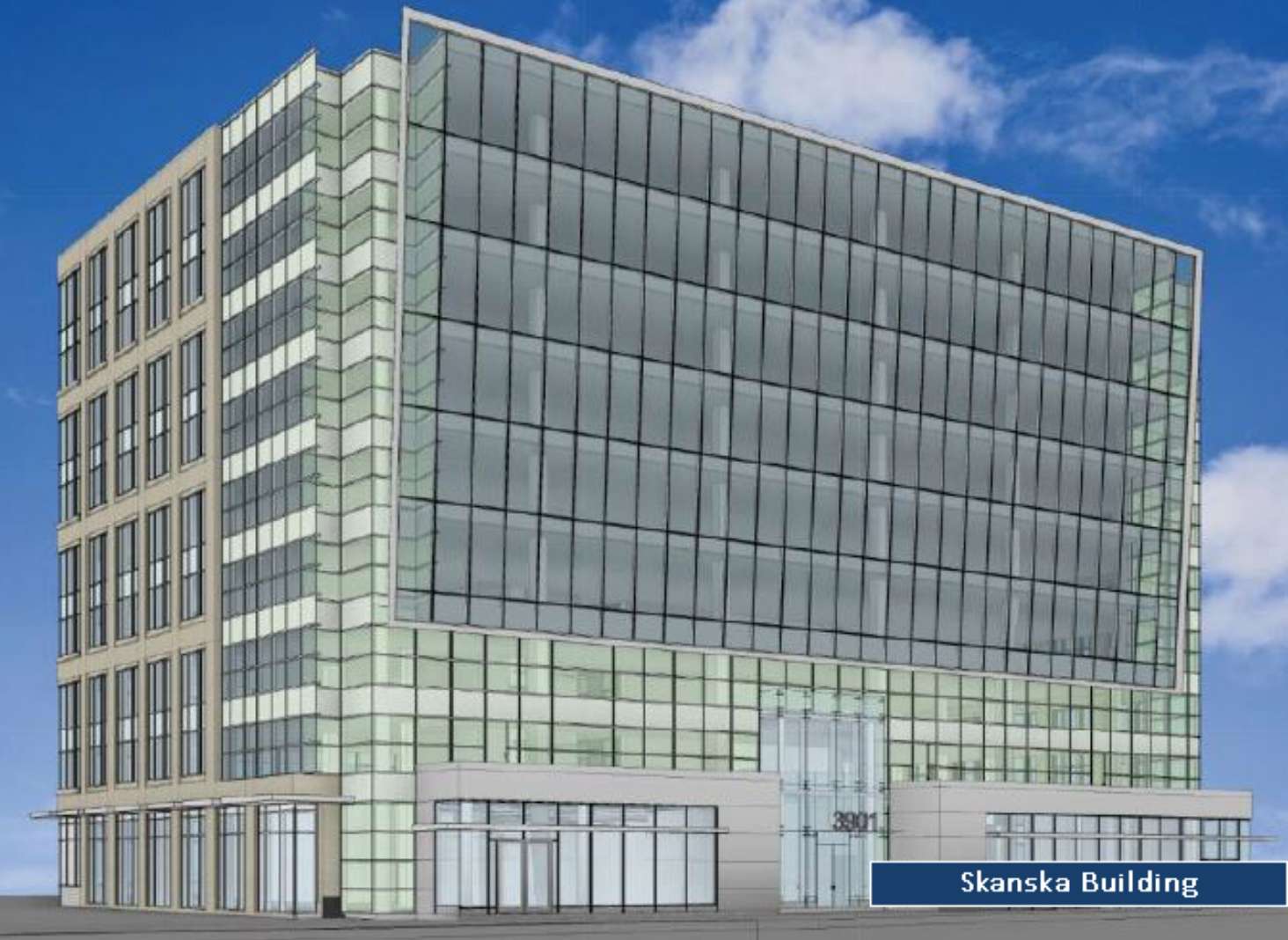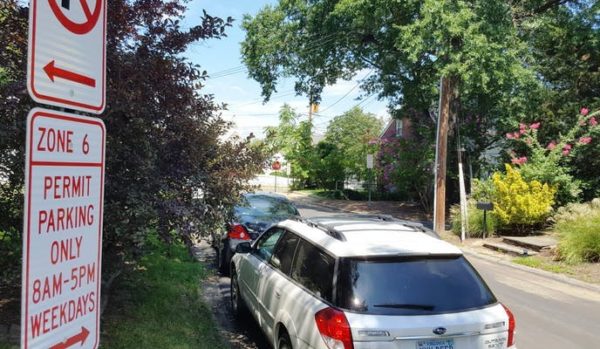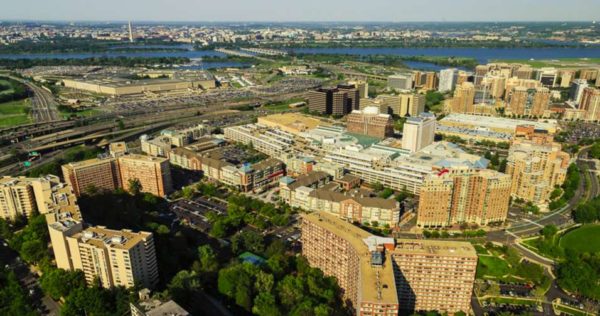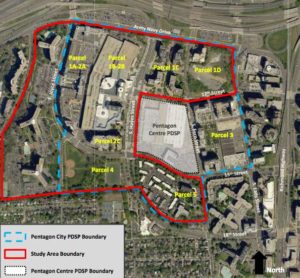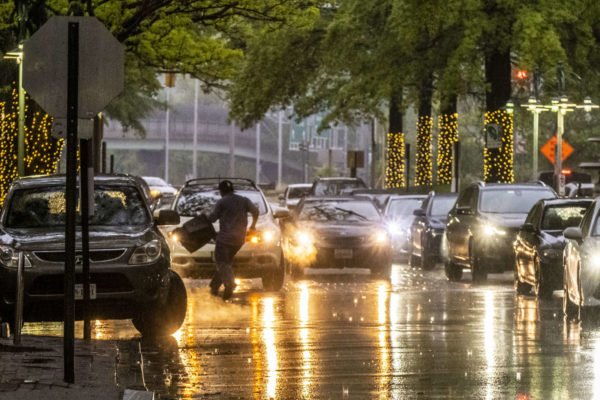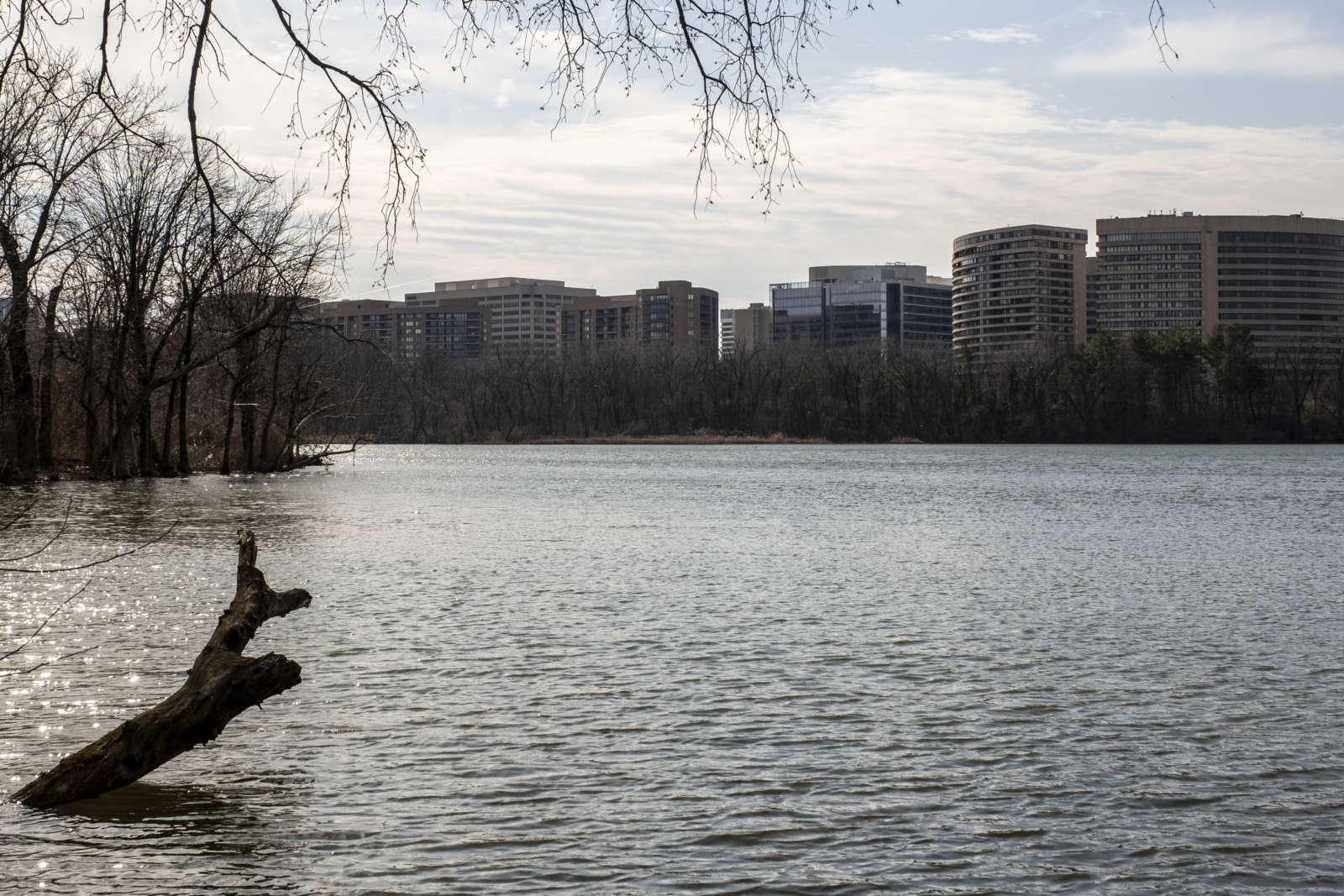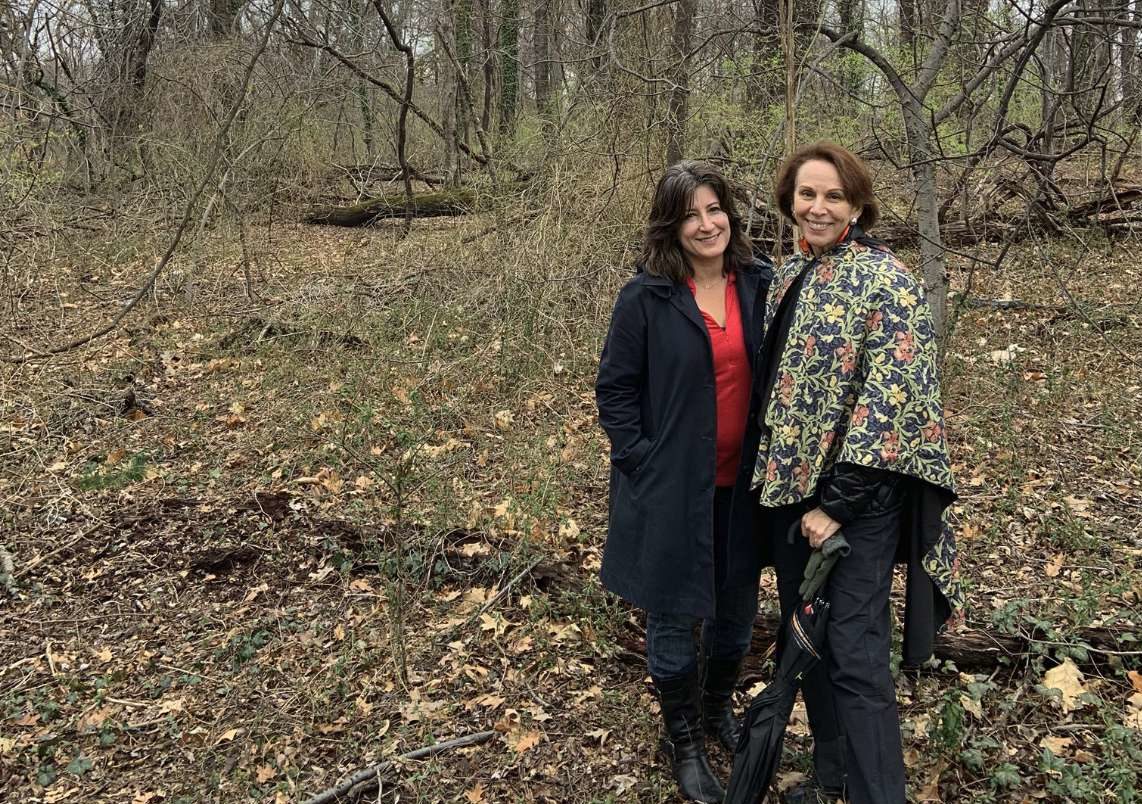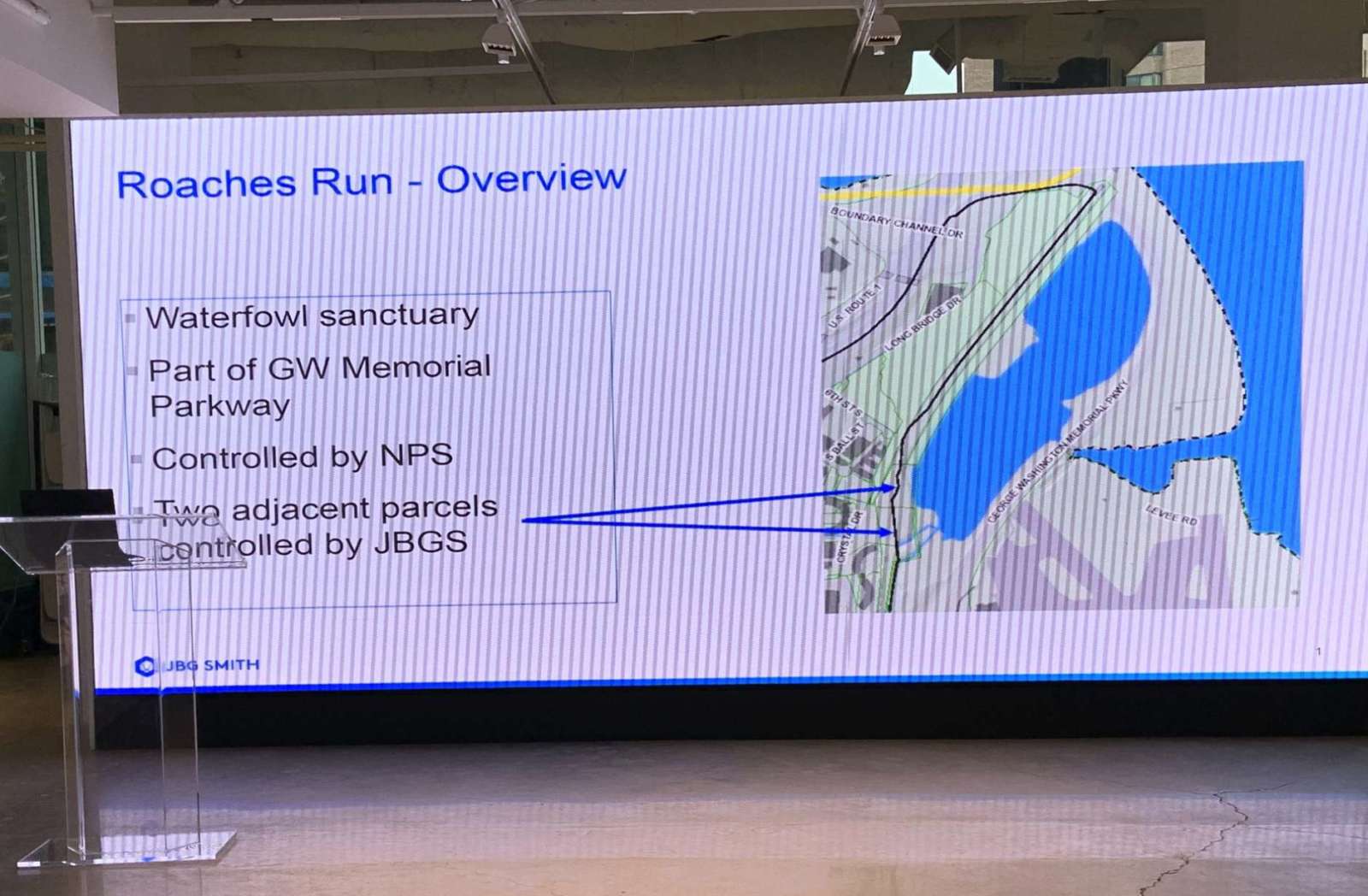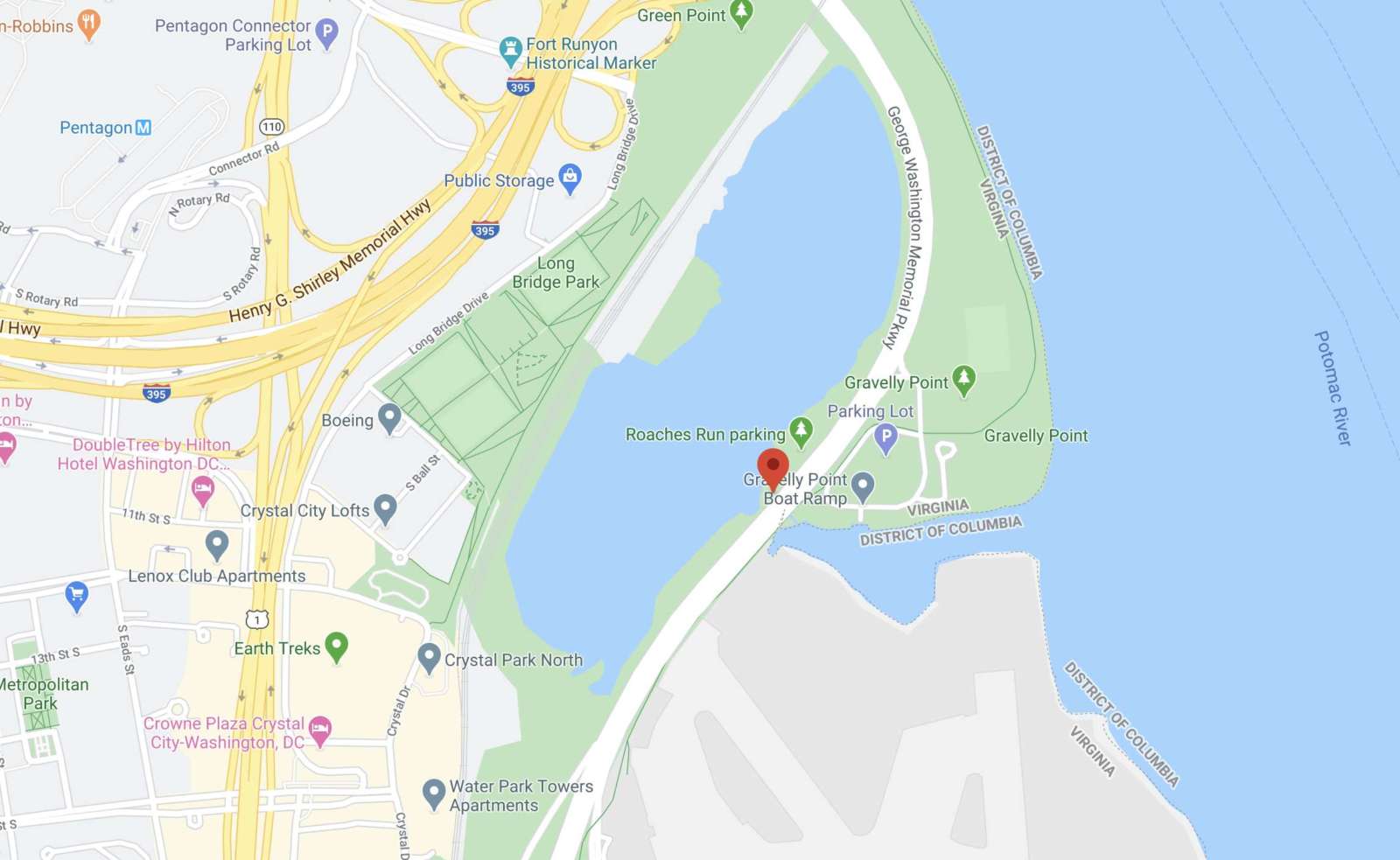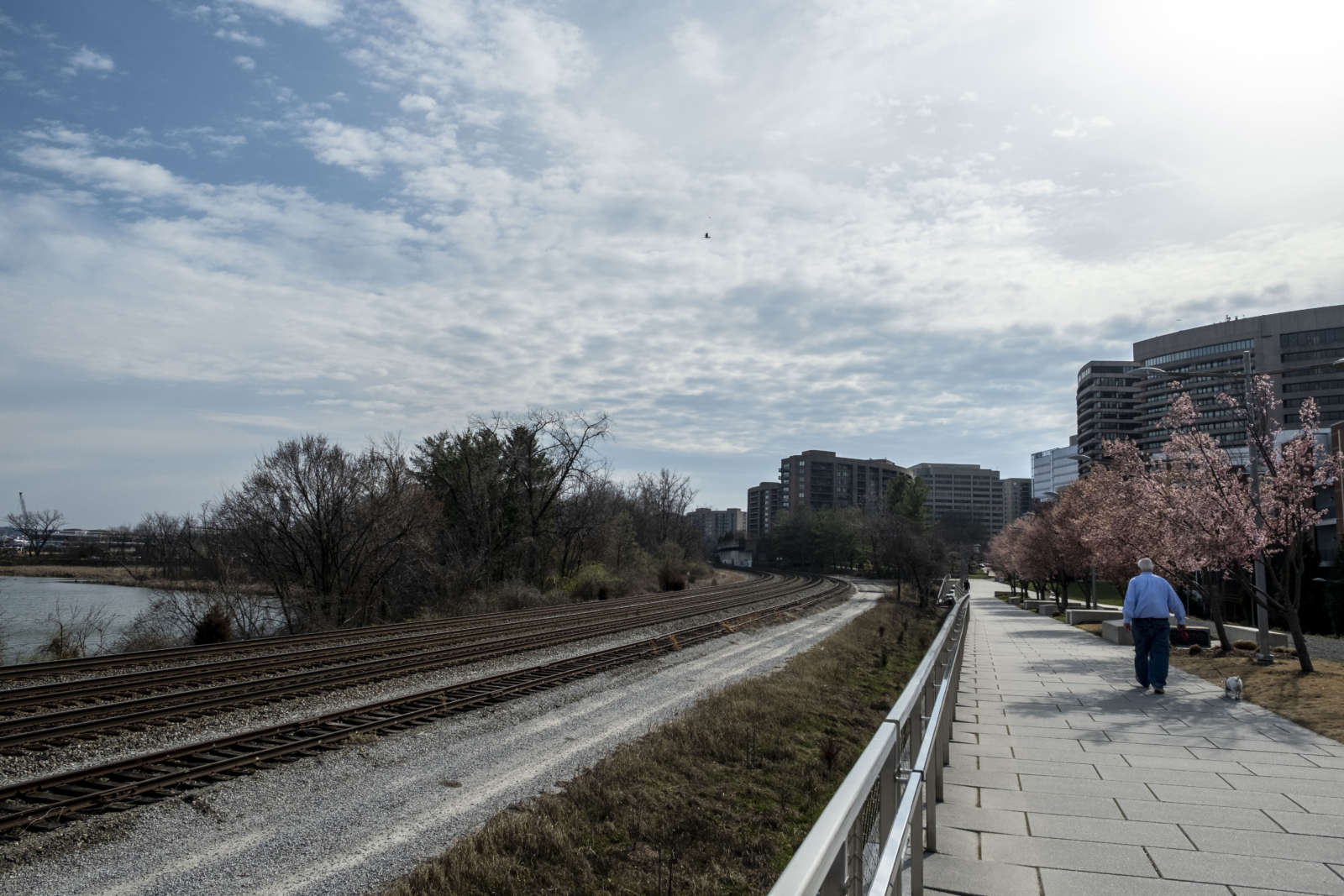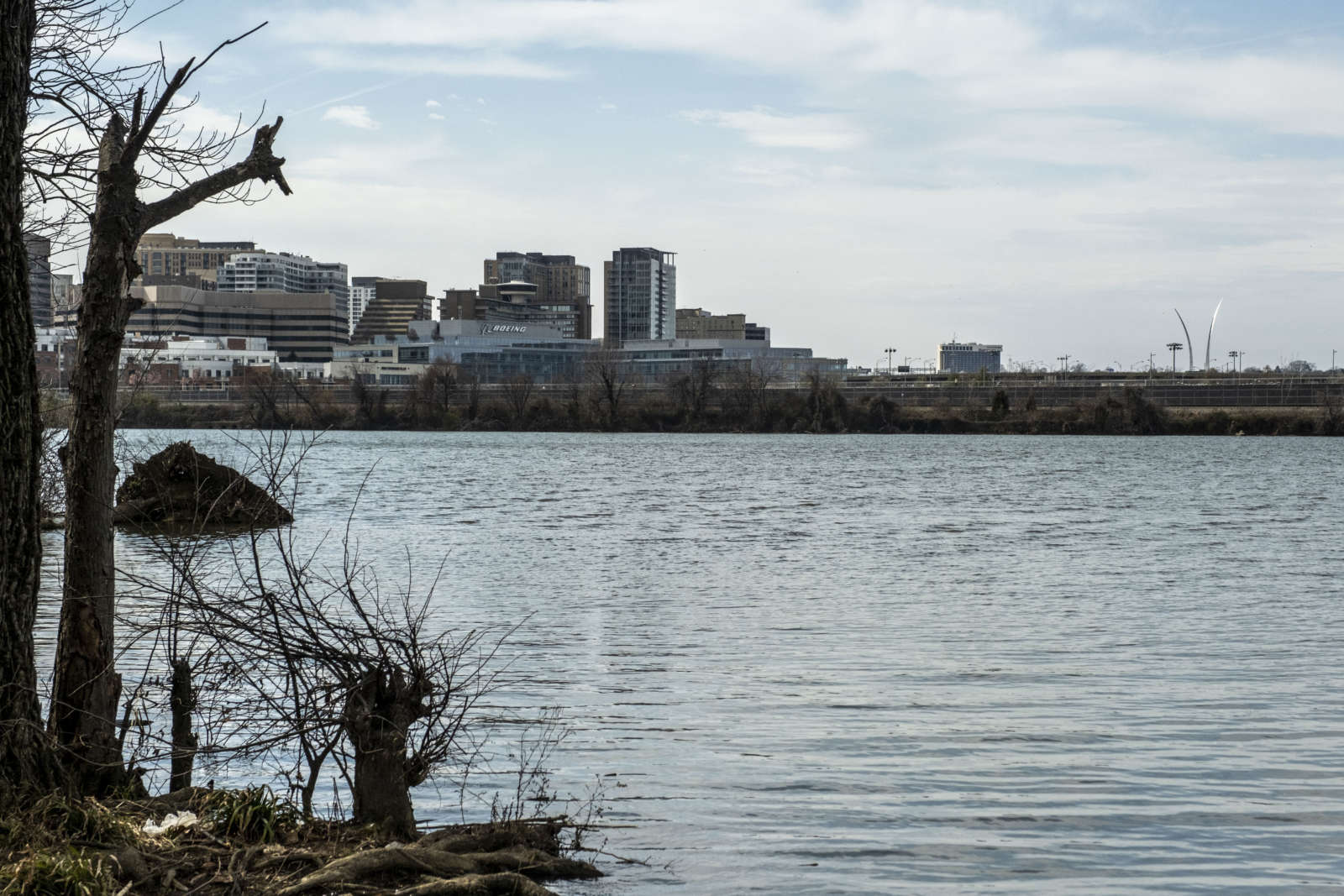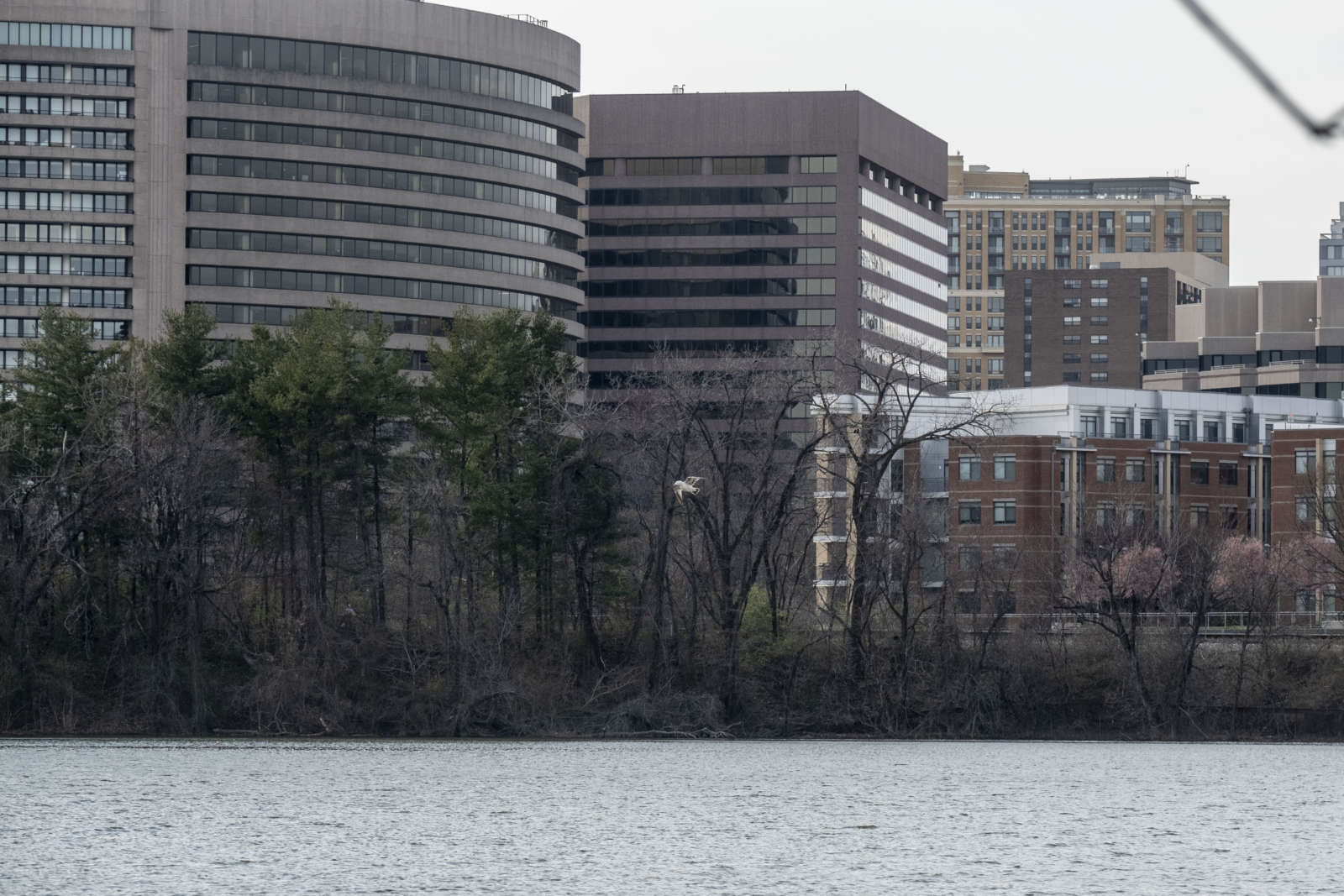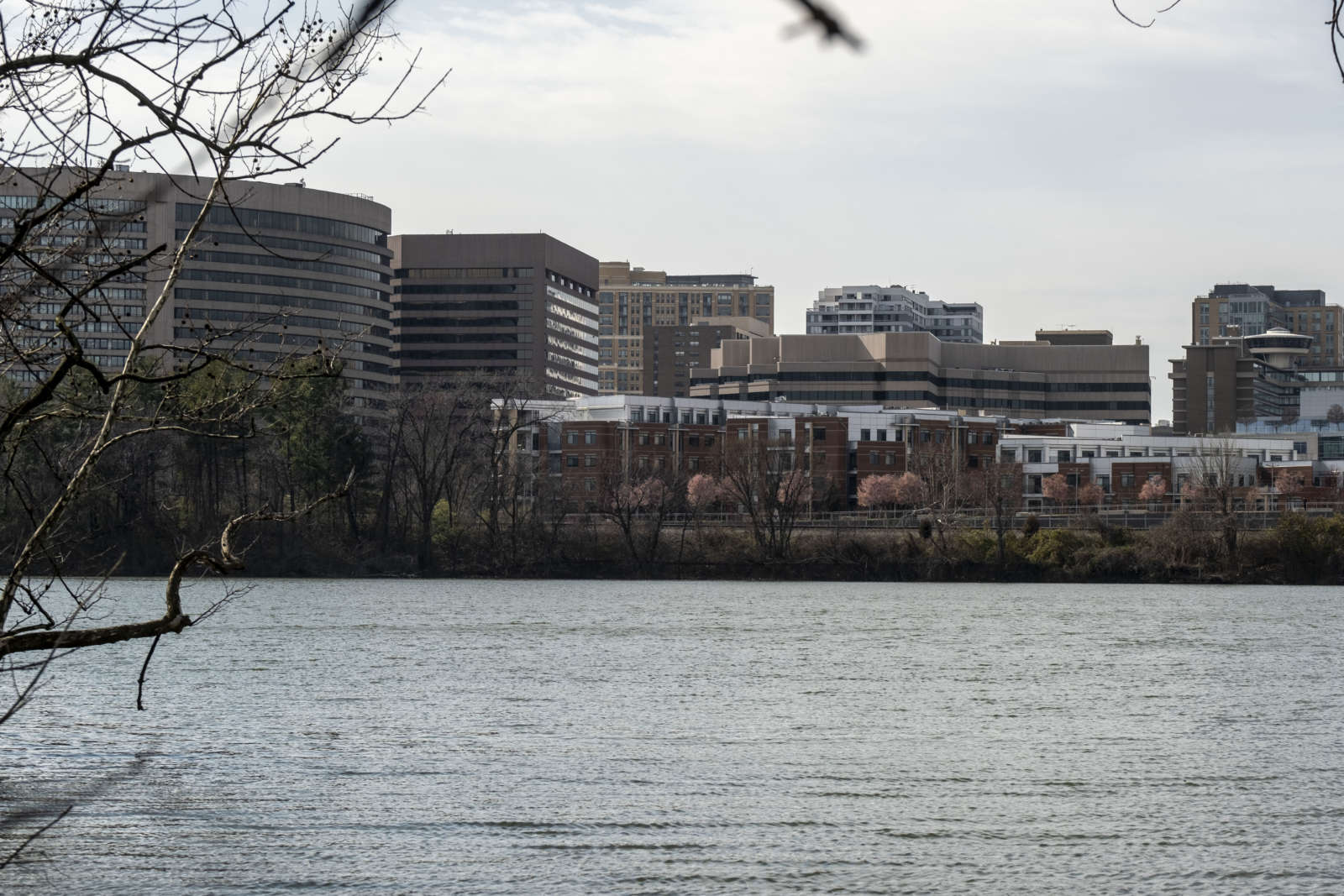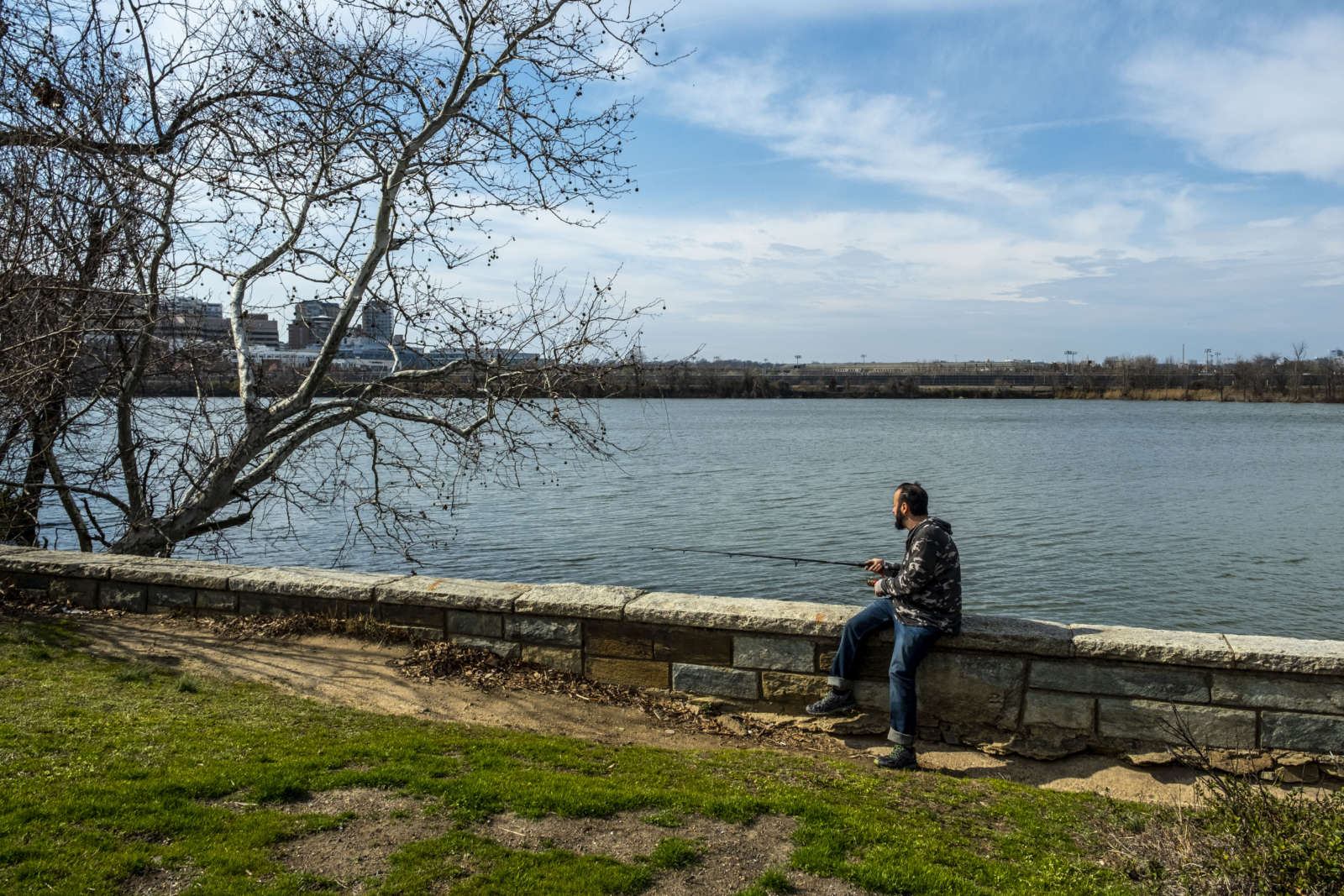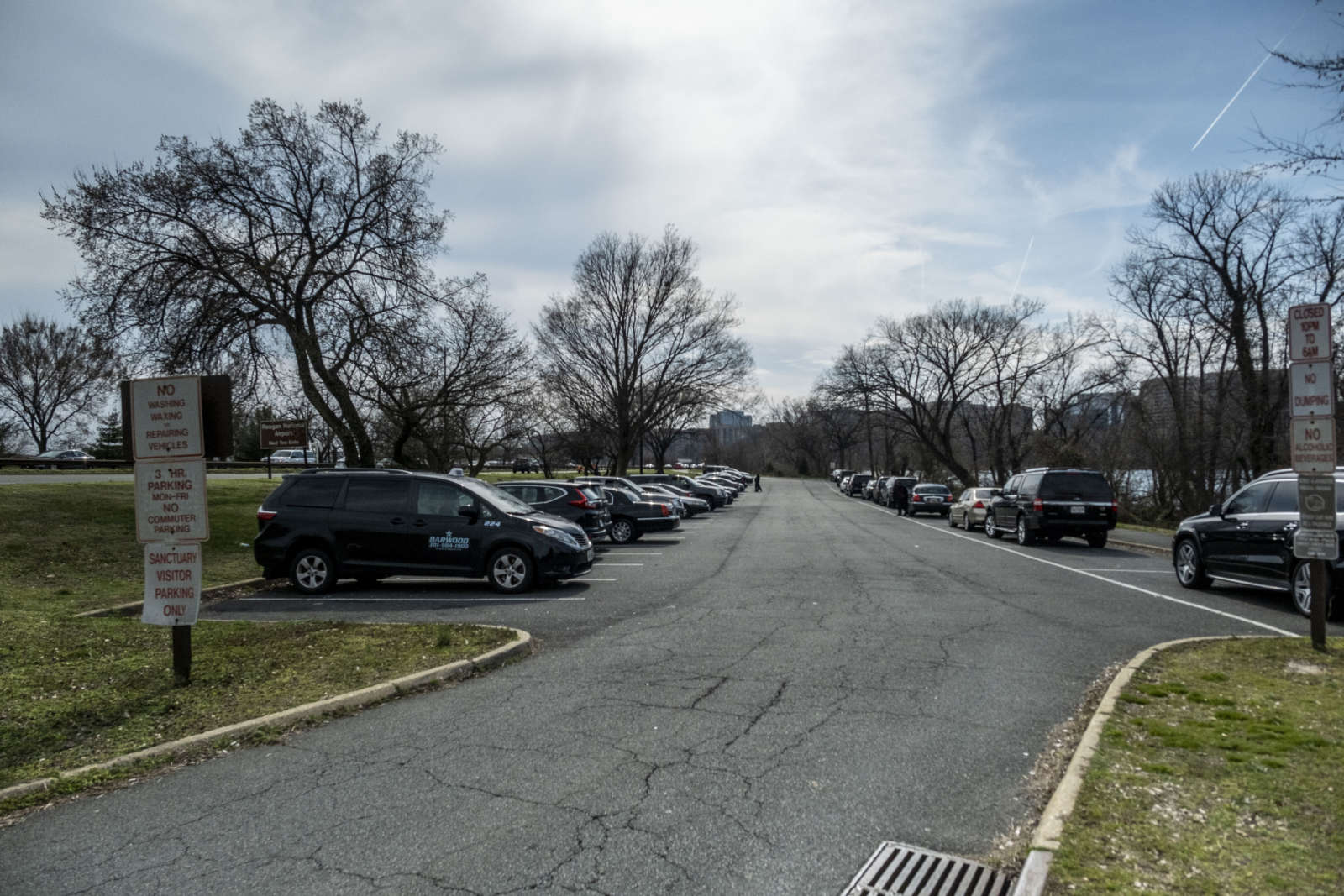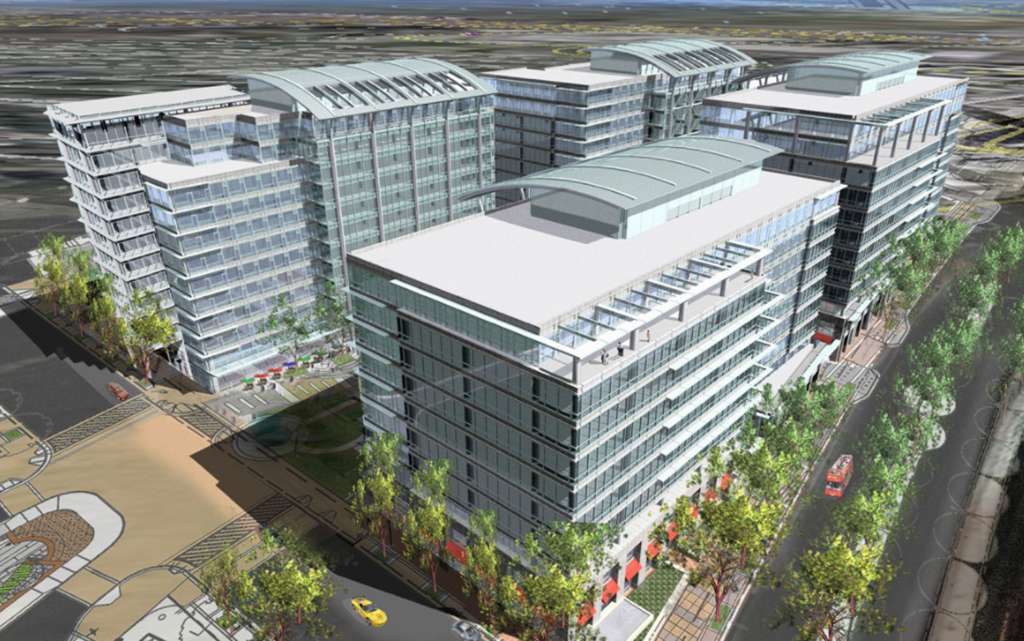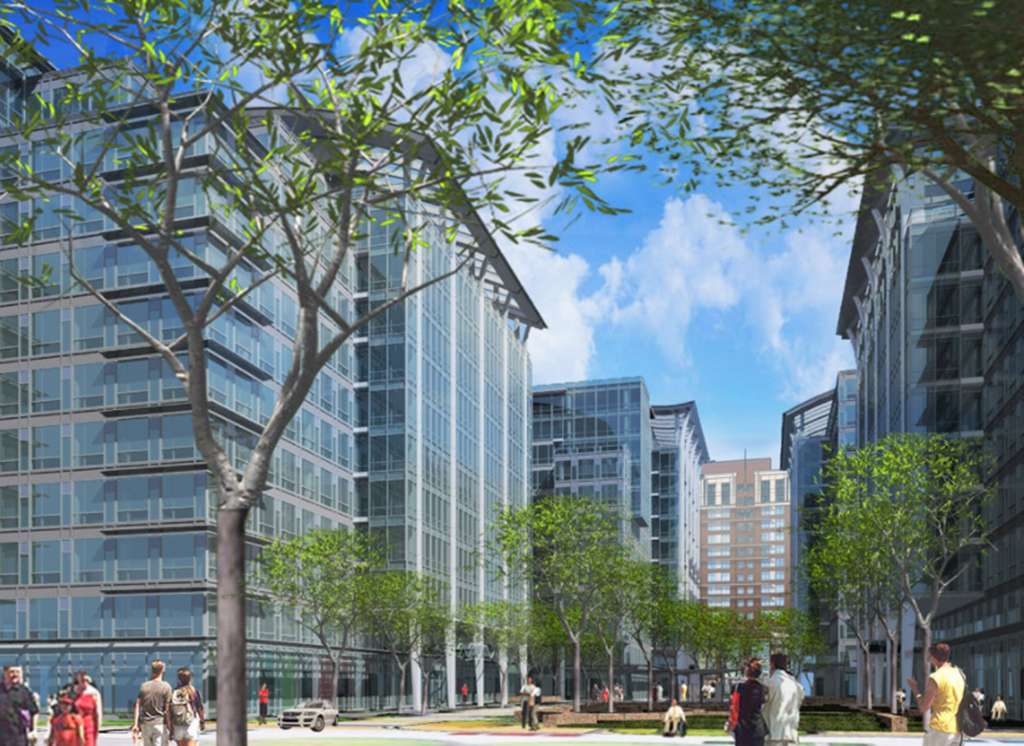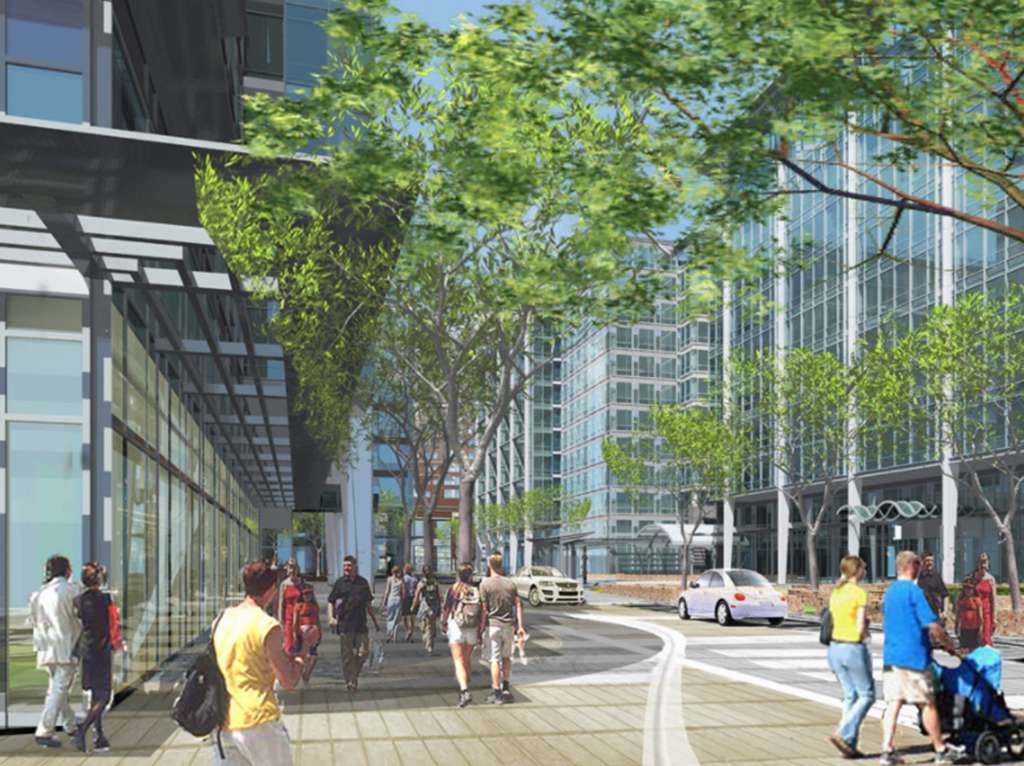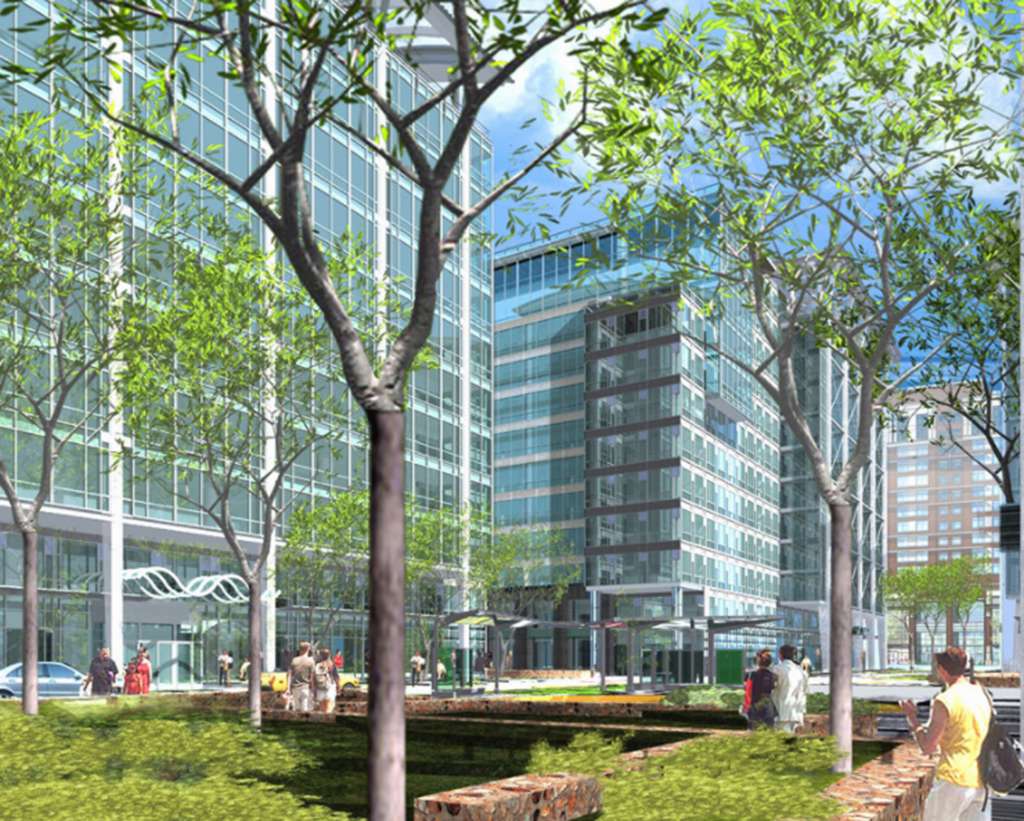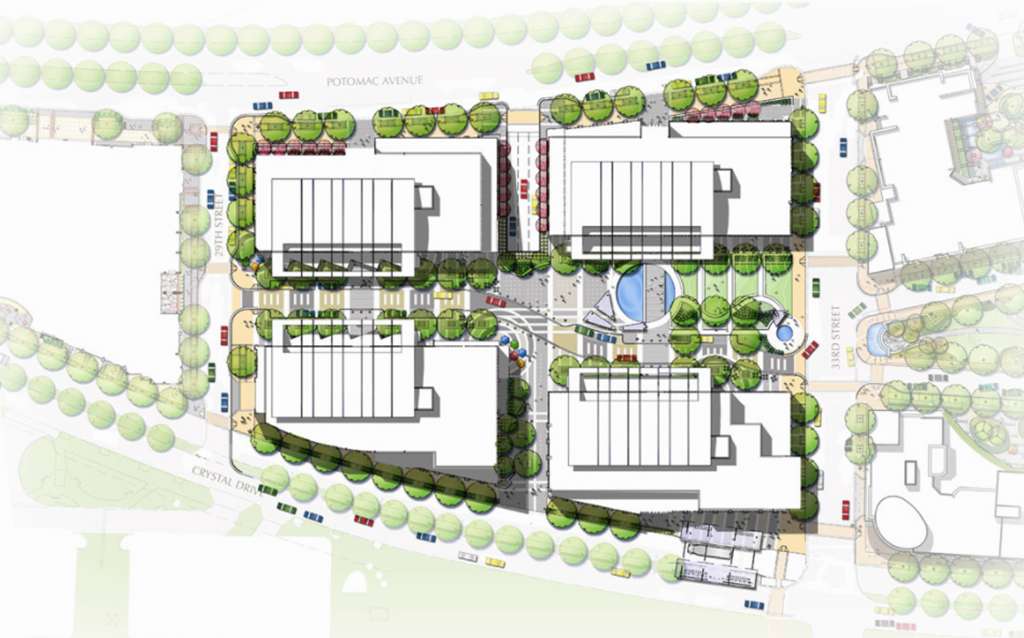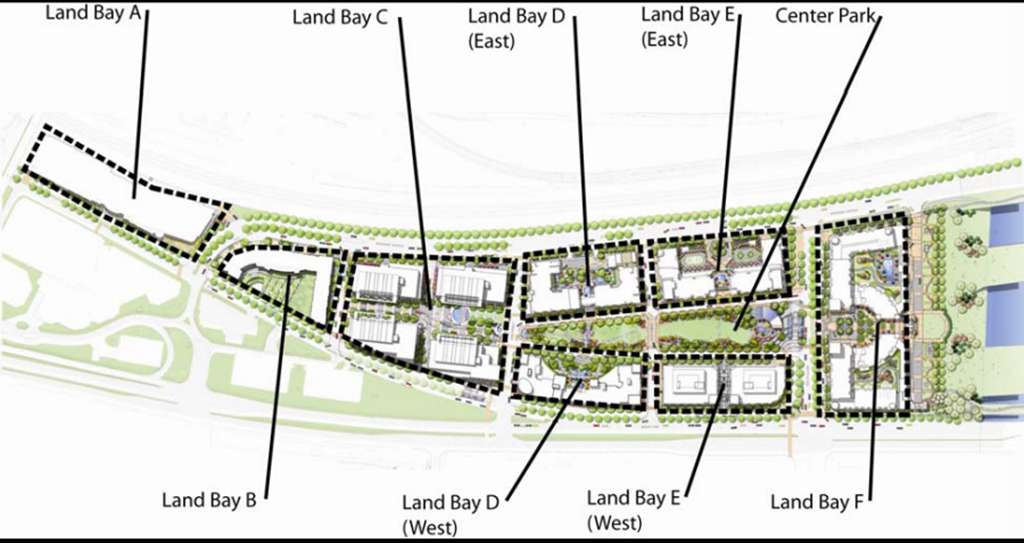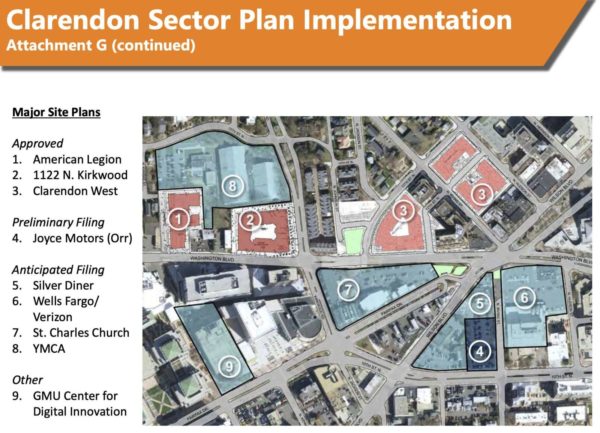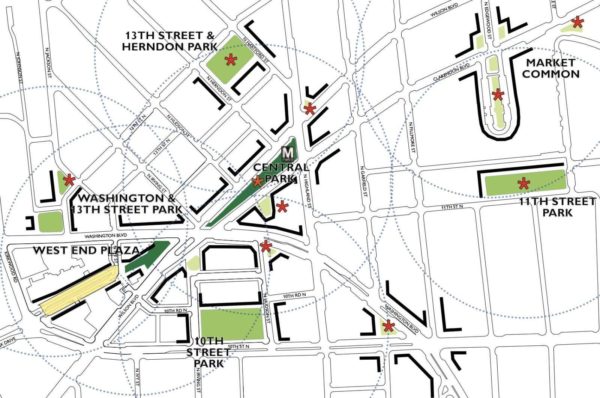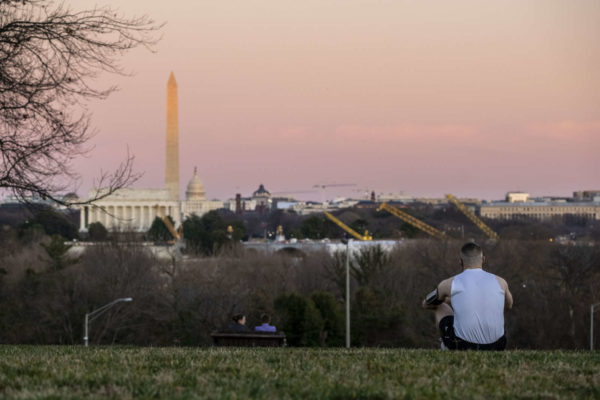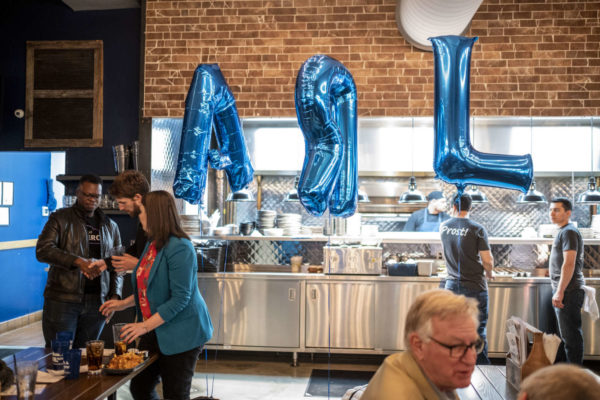Route 1 through Crystal City is currently a car-oriented, exhaust-clogged asphalt canyon that’s unpleasant for pedestrians to cross or even walk along. But there’s a push for that to change.
The National Landing BID, formerly known as the Crystal City BID before Amazon came to town, has just revealed its lusher, more pedestrian-friendly vision for Route 1, complete with wide sidewalks lined with ground-floor retail and restaurants.
We are proud to be a champion of projects that enhance connectivity, like "Reimagine Route 1", which begins the conversation around transforming the highway into a more pedestrian-friendly experience. #reimagineroute1 https://t.co/snrzY90Eza
— NationalLanding (@NationalLanding) October 6, 2020
VDOT is currently studying the corridor and considering whether overpasses in the Crystal City area should be removed in favor of a more conventional, urban street grid. The BID’s new Reimagine Route 1 report takes that and other ideas for modernizing the corridor and turns it into a series of concept designs, complete with 3D renderings.
“The concepts presented in Reimagine Route 1 draw upon best practices in urban street design by placing people at the center of National Landing’s future,” Matt Gerber, General Manager of the Westin Crystal City and Co-Chair of the BID’s Transportation Committee, said in a statement today. “Narrow lane widths, lower design speeds, and urban intersection geometries ensure that the autocentric mistakes of the past will not be replicated in the development of the corridor’s new and distinctly community-focused identity.”
The BID’s vision for turning Route 1 — also known as Richmond Highway — from a commuter route into an “iconic corridor serving a thriving urban neighborhood” draws comparisons to main routes in other major cities.
The report includes photos of Octavia Boulevard — formerly Central Freeway — in San Francisco, as well as Michigan Avenue in Chicago, which like Route 1 has three vehicle lanes in each direction.
“Also known as the Magnificent Mile, the 13-block stretch of North Michigan Avenue from the Chicago River to Oak Street has a similar vehicle carrying capacity as the existing Route 1 yet boasts a walkable and vibrant public realm with safe connections to transit and a well-connected street grid,” the report says.
The report is intended to start a conversation about the corridor’s long-term future, which officials may then opt to turn into action via transportation and land use changes. The overall goal is to turn the Crystal City, Pentagon City and Potomac Yard neighborhoods — collectively now known as National Landing — into a cohesive urban area over time.
“Route 1 was originally designed to accommodate the auto-centric development trends of the mid-20th century, when the primary objective was to move cars through the area as quickly as possible,” the BID said in a press release. “The resulting elevated highway, super blocks, and oversized intersections divided the community for decades, inhibiting not only connectivity and access, but also the area’s ability to come together as a singular downtown district.”
Others have also been working on envisioning changes to Route 1. The Crystal City Sector Plan, approved in 2010, set a more urban vision for the community through 2040. Local civic associations, meanwhile, have recently formed a collective called Livability 22202 to discuss ideas. From an August article:
Proposed changes ranged from building storefronts or markets in the area underneath the overpasses, creating more open space where thick sandstone-colored walls now hold up the highway, and putting Route 1 underground to allow for development on top of it.
More on the Reimagine Route 1 report, from a press release, is below.


